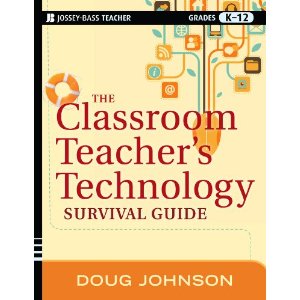Putting Computer Skills in Their Place
Putting Computer Skills in Their Place
Head for the Edge, February 1997
Business, higher education, and parents have made it clear that high school graduates need to be proficient computer users. Yet there seems to be only a vague notion on the part of the public (and most educators) of what computer literacy really means.
- Can a student who operates a computer well enough to play Doom be considered computer literate?
- Will a student who has used computers in school only for running tutorials or an integrated learning system have the skills necessary of survival in college or the workplace?
- What exactly are the “basic skills” of computer use all high school students should master before graduation, and where in the school curriculum should those skills be taught, how should they be taught, and by whom should they be taught?
One commonly agreed upon educational philosophy is that computer skills need to be integrated into the content areas, and not be taught in a separate “computer class.” Yet to my knowledge, no effective, comprehensive K-12 set of computer skills and model for their integration exists. Too often computers are used only as electronic flash cards or worksheets, and the productivity side of computer use is neglected or grossly underdeveloped. Productivity tools, such as word processors, databases, spreadsheets, graphic tools, chart makers, etc., are often taught only special classes like business education or technology education - classes taken by a minority of students, despite the fact most of these applications are of significant benefit to all students.
However many schools have successfully integrated one set of skills into the curriculum - information skills. The school library media profession has long insisted that information skills not be taught in isolation, and the best media programs are designed around cooperative projects jointly taught by the classroom teacher and the school library media specialist. The inclusion of a comprehensive, identified list of computer skills into an information literacy curriculum creates a terrific model for a computer literacy curriculum, and eliminates the necessity of a separate computer curriculum.
Varieties of information literacy curricula can be found in several places:
- the position paper adopted by AASL on information literacy.1
- the Big Six information problem solving models of Eisenberg and Berkowitz2,
- and the Michigan State Board of Education information literacy model3
In each of these models, the curriculum is a process divided into several steps, retaught at increasingly more sophisticated levels. One approach to integrating computer skills into the general curriculum is to revisit the steps of your school’s current information processing model, and add specific computer literacy skills. The computer skills are generally sub-sets of the broader information processing skill. They do not supplant, but supplement, the more general information skills listed. Examples of such integration can be found in the ERIC document “Computer Skills for Information Problem-Solving: Learning and Teaching Technology in Context.” 4.
Computer skills with in an information processing curriculum need to be separately and clearly stated for a number of reasons:
- Many districts already have some form of computer skills curriculum, and those skills felt to be valid should remain clearly stated.
- It is not realistic to expect most teachers and many media specialists to understand information literacy automatically assumes computer literacy.
- Clearly stated computer skills help determine the resources needed to effectively teach a skill. If it is the expectation that information be communicated through a computer-generated graph, then the need for a certain number of computers, types of software, and level of teacher proficiency is more easily established.
- The business world, academic community and public are aware of the need for students to have computer skills, but the need for information skills is less “hyped.” The inclusion of readily understood computer skills may help with the acceptance of the information literacy curriculum.
Listing computer skills within a process framework is only a first step in assuring that all our children become proficient information and technology users. A teacher supported scope and sequence of skills, well designed projects, and effective assessments are also critical. Many library media specialists will need to hone their own technology skills in order to remain effective information skills teachers. But such a curriculum holds tremendous opportunities for library media specialists to become vital, indispensable staff members, and for all children to master the skills they will need to thrive in a information rich future.
- American Association of School Librarians, “Information literacy: A position paper on information problem solving,” Emergency Librarian (November-December 1995): 20-23.
- Eisenberg, Mike and Bob Berkowitz. Curriculum initiative: An Agenda and strategy for library media programs. Norwood, NJ: Ablex, 1988.
- Michigan State Board of Education. Position paper on information processing skills. Michigan, 1992.
- Eisenberg, Mike and Doug Johnson. Computer skills for information problem-solving: learning and teaching technology in context. ERIC Document EDO-IR-96-04, 1996.





Reader Comments